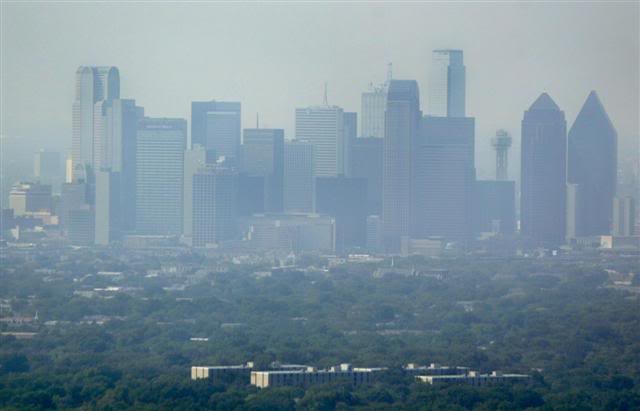May 7, 2019

Today, the Sierra Club and the Center for Biological Diversity, represented by Earthjustice, filed a lawsuit against the Environmental Protection Agency (EPA) over the agency’s failure to increase protections in numerous communities that have dangerous levels of ozone smog. The communities at issue include the Houston and Dallas-Fort Worth areas; San Diego, Nevada, and Imperial counties, CA; the greater Chicago area; Phoenix, AZ; Baltimore, MD; Sheboygan, WI; the entire state of Connecticut; and the New York City area.
All of these areas and others are subject to Clean Air Act protections because their ozone levels have exceeded the health and ecosystem-protective standards the EPA established in 2008. Under the Clean Air Act, EPA was legally obligated to determine by January 20, 2019, whether they had cleaned up their air enough to meet the 2008 standards. Areas that still have dirty air will be subject to stronger protections. But the EPA still has failed to make the required determinations. As a result, more effective protections have yet to go into effect, and community members and natural areas must continue to endure harmful air pollution.
Under the Clean Air Act, EPA has an obligation to establish National Ambient Air Quality Standards (NAAQS) for a number of common air pollutants including ground-level ozone. Ozone-forming pollution is made up of volatile organic compounds which are prevalent in oil, gas and petrochemical development, as well as oxides of nitrogen as a result of burning fossil fuels like coal and fracked gas. Volatile organic compounds include extremely harmful hazardous air pollutants like benzene, formaldehyde, and toluene. Ground level ozone is a dangerous pollutant that impacts those with upper respiratory issues like asthma, causes premature birth, premature death and impacts the elderly and children significantly. Smog pollution harms human health and the environment in suburban, urban, and rural communities throughout the country.
“The EPA’s job under the Clean Air Act here is simple: determine whether these communities continue to violate the 2008 ozone standard. Its inaction is bad for community members, especially children and people with asthma. We’re going to court because it’s well past time for the EPA to follow the law and do its job,” said Seth Johnson, an attorney with Earthjustice who is representing the Sierra Club and the Center for Biological Diversity.
"2.6 million people in Dallas county alone are being negatively impacted by EPA's unwillingness to adhere to their obligations under the Clean Air Act, said Misti O’Quinn, Dallas resident and organizer for Sierra Club’s Beyond Coal Campaign. It is way past time for the EPA to stand up and uphold its obligations to us as citizens, and not shirk their responsibilities of protecting not only our environment but our quality of life."
Reducing smog pollution is also an environmental justice concern, as many sources of ozone-forming pollution are located in low-income communities and communities of color in urban centers and rural areas. For example, in Texas, low-income communities of color along the Houston Ship Channel face extreme pollution burdens from operations relating to petrochemicals and oil refining. Those industries are responsible for large amounts of the smog-forming pollution that affects the entire region. When the EPA takes its legally required action to increase clean air protections in Houston, facilities in the Ship Channel area will face stronger limits on the harmful volatile organic compounds and oxides of nitrogen they generate.
“In addition to the unprecedented massive amounts of cancer causing chemicals from Hurricane Harvey and the ITC disaster we still have to contend with smog forming pollutants along the Houston Ship Channel, said Bryan Parras, Houston resident and organizer for Sierra Club’s Dirty Fuels Campaign. We live in the port and deal with the impacts of concentrated chemicals from maritime vessels, machinery, diesel trucks and more in our communities along the ship channel.”
Areas with more severe pollution problems have more time to meet the attainment standards but are subject to tougher emission limitations on new or modified “major sources” of ozone-forming pollution like coal plants, refineries and chemical facilities in addition to better control for emissions from motor vehicles.
The lawsuit is a straightforward deadline suit aimed at forcing EPA to fulfill its overdue duty to issue “attainment determinations” and bump up the classification of areas failing the 2008 standards by a date certain in the near future.
“In addition to making people sick, ozone causes significant damage to a wide variety of plants and animals including black cherry, quaking aspen, ponderosa pine and cottonwood,” said Robert Ukeiley, environmental health senior attorney at the Center for Biological Diversity. “Trump’s EPA’s foot dragging has to be challenged in light of the grave consequences of failure to reduce smog.”
The complaint was filed in U.S. District Court for the Northern District of California.